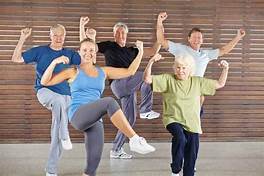
by Matt Sutterer Health Specialist, Division of Neuroscience (DN)
The ability to stand or sit without falling seems simple enough, but it actually involves a complex orchestration behind the scenes of our visual, positional, and vestibular systems. Aging can affect all three of these sensory systems, resulting in balance disorders such as dizziness or vertigo and increased risk for falls. According to the Centers for Disease Control and Prevention, one in four Americans aged 65 or older reports falling each year, and 20% to 30% of those who fall suffer moderate to severe injuries.
Robust research has helped us understand how vision contributes to balance in older adults. However, there has been significantly less research conducted on how balance is affected by the aging vestibular system — the organs of the inner ear that help us sense movement and orientation in space. How these systems interact in the brain, both in healthy aging and in older adults with neurodegenerative diseases and conditions such as Alzheimer’s disease and related dementias and Parkinson’s disease, is not well understood.
Seeking a steadier research landscape
In April 2019, NIA, in partnership with the National Institute on Deafness and Other Communication Disorders (NIDCD), hosted a two-day workshop, “Central and Peripheral Control of Balance in Older Adults.” Workshop co-chairs Coryse St. Hillaire-Clarke (Program Director, Division of Neuroscience) and Lyndon Joseph (Program Director, Division of Geriatrics and Clinical Gerontology) led the effort that featured presentations from an array of researchers and clinicians across diverse fields, including gerontology, geriatrics, neurology, neuroscience, movement science, and rehabilitation. A white paper was recently published highlighting the workshop’s outcomes.
The discussion focused on three key questions:
How does aging impact vestibular function?
We lack a good understanding of aging’s impact on vestibular organs and the brain areas to which they connect and how these changes relate to clinical symptoms.
How do we tease apart the different contributions of age-related sensory and motor changes in an older adult with balance problems?
Common symptoms like dizziness, disequilibrium, unsteady walking, and increased falls can result from age-related changes in the vestibular system, other sensory systems, and even musculature or cognition. Determining the effects of each is vital for identifying treatments for balance disorders.
How can we develop a better classification system of balance problems in older adults?
The field currently lacks a widely accepted model of balance that reflects its multimodal nature. This is needed to guide the development of clinical outcome measures and to translate balance interventions into clinical or community settings.
NIA is interested in helping to answer the question of how aging affects the vestibular system and how these changes interact with other factors that lead to balance impairment. Given the multidisciplinary and multisystem nature of balance, a team science approach will be critical to this effort.
Funding available — let’s hear your ideas!
If you are interested in tackling these and other questions about the vestibular system and balance in aging, please apply for the funding opportunity announcement released earlier this year in collaboration with NIDCD by October 2, 2020. Contact Dr. Joseph or Dr. St. Hillaire-Clarke for more details. We would love to hear your questions or comments!
Add new comment
